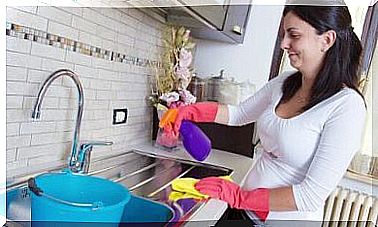Homemade Soap For Treating Eczema Of The Skin
Thanks to the action of the essential oils it contains, this is an antibacterial, moisturizing soap with which we can relieve the inflammation of the affected skin areas and stimulate their regeneration
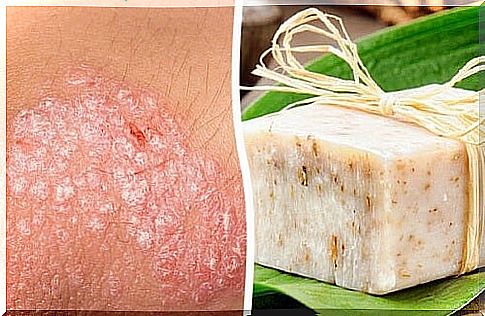
In this article, we’ll give you a recipe that you can use to make your own natural soap.
You can use this soap on your entire body, but it is particularly suitable as a complementary treatment for eczema of the skin.
How do I know if I have eczema?
The term eczema describes a group of skin diseases that are primarily characterized by itching.
In the acute phase, typical signs are also redness, vesicles, pustules and crusts, while chronic eczema is accompanied by flakes and skin thickening.
Some eczema looks like a rash. They can occur at any age, but are particularly common in babies.
The soap, which can be prepared according to the recipe presented here, is suitable for all types of eczema, atopic dermatitis, psoriasis and other skin diseases.
More and more people suffer from skin diseases.
In some cases, exposure to skin- damaging substances or environmental factors is certainly responsible for this, but our diet also has a major impact on the health of our skin. There is also a genetic component.
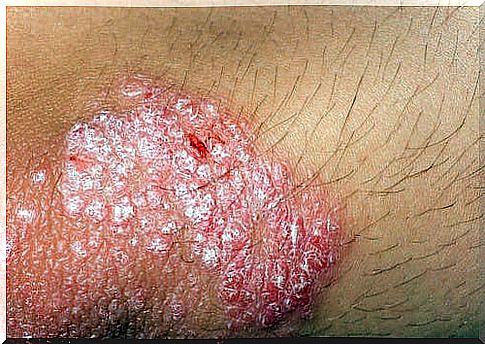
Skin eczema is often a chronic problem that often becomes a long-term, tiring task to heal. If we take a holistic approach and apply all levers at the same time, we have a good chance of success:
- Make sure you use natural products and fabrics.
- Keeping a food diary can help you identify potential food intolerances.
- Substances that can cause allergies in you should be avoided.
- Skin health often reflects our physical and, above all, emotional health. Therefore, avoid tension, anxiety, and stress.
Which products do we choose?
- Neem: The oil from the neem tree helps the skin to rebuild its structure, stimulates the regeneration of skin cells and supplies the skin with moisture. These properties make neem a suitable remedy for any type of skin problem.
- Marigold oil : Marigold oil has an anti-inflammatory effect and prevents the skin from drying out. It is particularly suitable for people who suffer from eczema or psoriasis.
- Tea Tree: Tea tree oil is very effective when it comes to skin problems that involve bacteria or fungi that it is able to kill. At the same time, skin regeneration is stimulated.
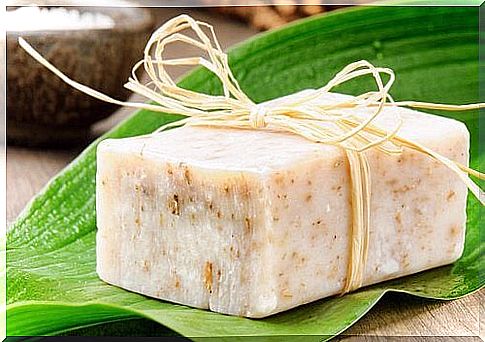
ingredients
- 210 ml of olive oil
- 30 g caustic soda
- 65 ml of distilled water
- 30 drops of neem oil
- 30 drops of marigold oil
- 15 drops of tea tree oil
Required utensils
- Safety glasses for handling the caustic soda.
- A glass vessel.
- A pot.
- A wooden spoon to stir.
- A mold in which we want to pour the soap. If you don’t have soap molds, you can use the bottom of a bottle or tetra pack. Aluminum forms are unsuitable.
Making the soap
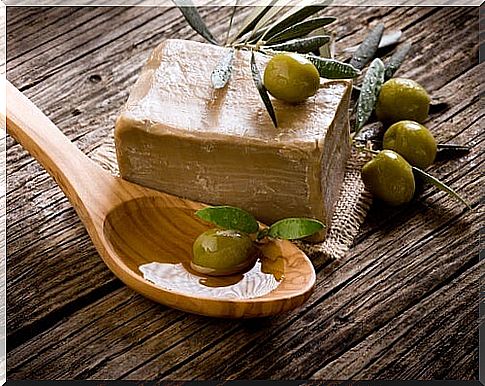
- Very carefully and with the help of protective goggles, we put the caustic soda into the glass vessel. The best thing to do is to put the latter in the sink.
Then the distilled water is added. To avoid burns, do not change the order in which these ingredients are used.
Caustic soda and water react with each other in a chemical reaction and vapors are formed. Allow the reaction to proceed and let the mixture sit until it cools. If you can ventilate your kitchen during this time, that’s even better. - Now let’s heat the olive oil in a saucepan on a low flame. When it is lukewarm, around 40 ° C, we take it off the stove and carefully mix it with the mixture of caustic soda and water. If possible, it should not be poured or splashed at any time.
Keep stirring, preferably with a hand blender, until the mixture gains consistency and turns into a gel.
- At that moment and before it cools down, we add the essential oils and stir.
- Now it’s time to pour the soap into the prepared molds. We then cover this with a towel so that the heat is retained a little longer and the saponification can take place.
- Allow the soap to cool for at least 12 to 24 hours before tumbling it out of the molds.
- The soap should be kept for a month and a half to two months in a dry, cool place where it will still harden and mature.
Are you satisfied with the result of your soap production? Then next time you can use larger amounts and make more soap. Simply use several shapes and multiply the quantities accordingly.
A larger bar of soap can also be cut with a knife if it is already a little hardened. The smaller pieces are then kept separate from each other for further hardening and maturation.
Precautions
- We reiterate that the caustic soda must be handled very carefully. Children and pets have no business in the vicinity of the caustic soda!
- It is essential to wear protective goggles in every step of the soap production process, ideally also a mask and protective gloves. Caustic soda deserves its name and can cause severe burns.
- Should a drop of caustic soda fall on our skin, the area should be treated with vinegar immediately.








